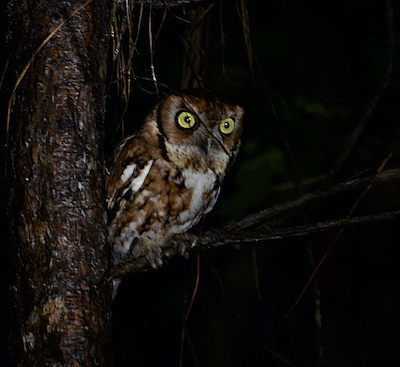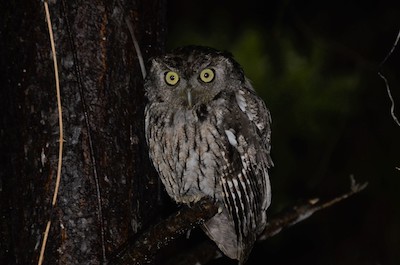Interesting Facts
The Eastern screech-owl is Georgia's most common owl. In fact, screech owls commonly live in both rural and suburban areas as long as they can find open woodlands or backyards dominated by mature trees.
In rural locations the screech owl may range over 75–100 acres. However, in suburban locales its range is sometimes as small as 10–15 acres. The size of the owl’s home range is determined largely by the availability of food. Ranges tend to be smaller where food is most abundant.
Like all species of native wildlife that use natural cavities, suitable nesting and roosting sites are often at a premium. Each year logging, land clearing and other activities reduce the number of cavity trees. As a result, screech owls must compete for these sites with wood ducks, squirrels, starlings, house sparrows, raccoons and a host of other species.
Screech owls can often be found using abandoned northern flicker cavities. While they will nest within a few feet of the ground, most screech owls nest in cavities 10–30 feet above the ground.

Nesting Facts
- Nesting begins in spring
- Males attract females to their territories which contain 1–2 cavities
- Each female lays 4–6 eggs which she incubates for 27–30 days
- The male feeds the female during incubation
- Both the male and female feed the young making 10–70 feeding trips per night
- Young screech owls fledge in 6–8 weeks
- Screech owls have one brood per year
Plumage
The plumages of the male and female are alike. Screech owls have two color phases, red (reddish-brown) or gray. In Georgia, most screech owls are gray; however, red birds predominate further north. Occasionally, a nesting pair will be made up of both a red phase bird and a gray phase bird.
Size
Standing only 8 inches tall, these tiny birds appear to be miniature great horned owls.

Screech Owl Nest Box Placement & Care
Download screech owl nesting box plans.
- Place boxes at least 10' above ground
- If squirrels are a problem, erect boxes on metal poles
- Pour 2–3" of wood chips or shavings in the bottom of each box
- Check boxes annually. Remove leaves and other debris found in boxes
For more information, contact WRD's Wildlife Conservation Section at 478-994-1438.



















